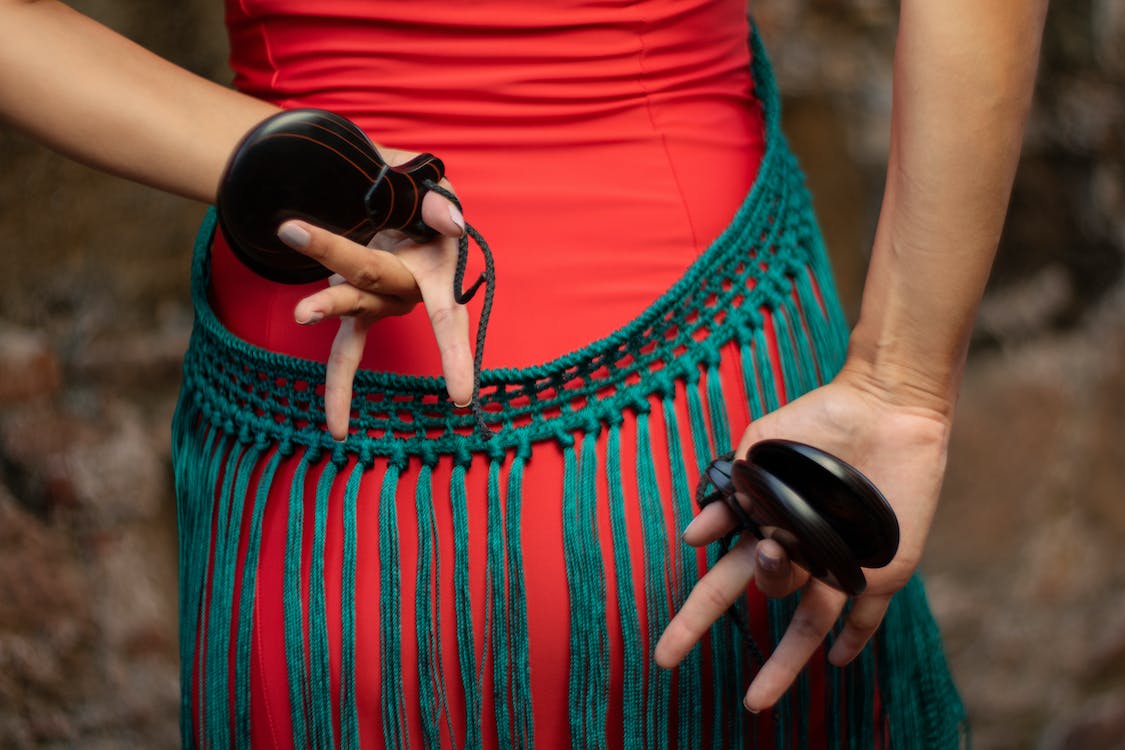The instrument castanet has a variety of names depending on the region or place where it is used. Castilians call these instruments castanuelas, while the Andalusians, as well as some flamencos, call thesepallilos.The castanet instrument was also referred to as ‘clackers’ in the United States. The castanets were also used in Swiss, Moorish, Portuguese, and Italian music. Greeks and Romans also used a similar instrument, which they called crotalum.However, whatever it is called, castanets are identifiable through their sounds. During the earlier times, famous dancers, including Carmen Amaya and Pilar Lopez, have danced using the castanets. Although many years have passed,castanets are still used by the Spanish flamencos.
During the 1600s to 1750s, also known as the baroque period, castanets were featured in dances. Some notable composers during that period are Jean-Baptiste Lully, who had composed the music of dances. Most of his scores for the dances involve less pleasant characters like demons and nightmares. Meanwhile, in the late Ottoman empire, castanets were played by the ‘köçeks,’ a male dancer dressed in feminine attire. As times passed by, their castanet called ‘çarpare’ was later replaced by the zillis, a metal cymbal.
What Does the Castanet Look Like?
Castanets are a pair of concave shells joined by a string on its edge. These instruments were usually made out of wood. The harder the wood is, the better the sound it will produce. These instruments produce clicks, rattling, or ripping sounds that were used to create a rhythm consisting of a rapid series of clicks.
The traditional wood that is used in making castanets is the granadillo. However, woods like ebony, pomegranate, rosewood, or oak also work. In addition to that, castanets should be kept warm and dry to play at their best. For that reason, flamenco dancers usually keep their castanets in a woolen sock.
Although the castanets that were made out of solid woods produces great sounds, these types of woods are also prone to cracking when exposed to excessive heat, cold, and hard knocks. With that, modern castanets are often made out of the pressed canvas and composite fiber since these materials are more resistant to knocks and temperature variations.Also, male and female castanet is quite different. The hembra (female) castanets were usually higher-pitched than the macho (male) castanets.
The origin of this instrument is not known. However, it is known to be used as apart of a dance ritual that the Greeks and Egyptians practiced during ancient times.
How to Wear and Play the Castanet?
Traditionally, this instrument was placed on the middle finger of each hand of the player. However, nowadays, some wear their castanets on their thumbs. In wearing the castanet, the hembra castanet was worn on the right, while the macho castanet was placed on the left. The complexity here is that hembra castanets were played differently in comparison to the macho castanet, which is usually played in single ‘clacks.’ The same way when a pianist played the piano with his right hand for melody and the left hand for the accompaniment. If you’re going to try your castanet, you must also learn how to hold the castanets properly in order to produce a good rhythm. Proper handling includes careful hand positions that a castanet player must master and maintain all throughout the dance.
There are five basic rhythms in playing this instrument. One is what they called ‘trill’ or ‘roll.’ This rhythm is played by tapping the hembra castanet using all your four fingersin rapid succession. Second is the ‘tac,’ which is simply a single tap using the ring and middle finger in your left hand. The third is what they called ‘tic.’ It is much similar to the second rhythm except that the sound was produced using your right hand. Fourth is the ‘pan,’ a loud note made by clapping the instrument. The fifth is called ‘chin,’ achieved by striking the castanet against each other across the player’s front body.
Interestingly, castanets were also used in classical music, especially classical music that has a taste of Spanish. However, there are only four orchestral castanets player worldwide. Their place was sometimes replaced by castanet machines or handled castanets.

